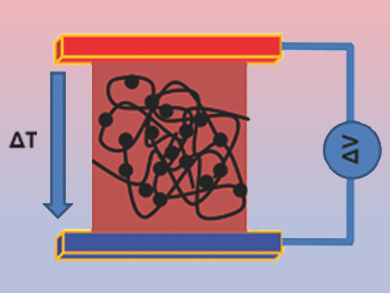The Seebeck effect is the conversion of temperature differences into electricity. Thermoelectric generators (TEGs) can harvest heat energy using this effect, and could be applied, for example, for waste heat energy from combustion engines and photovoltaic cells. The efficiency of the heat-to-charge-conversion process depends on the material used and the temperature. A bottleneck in exploiting heat energy by TEGs is the high cost of efficient thermoelectric materials able to operate at room temperature. Conductive polymers are an attractive alternative, as they can transport electronic as well as ionic charge carriers at lower temperatures.
Xavier Crispin, Linköpings Universitet, Norrköping, Sweden, and colleagues investigated the role ionic charge carriers play for the Seebeck effect in different poly(3,4-dioxythiophene) (PEDOT)-derivatives. They find that the total thermopower appears as the sum of the ionic and the electronic Seebeck coefficient. In PEDOT-polysterene sulfonate, the ionic Seebeck effect enhanced the maximum thermoelectric power factor by as much as two to four magnitudes. Unfortunately, the output power in ionic conductors drops over time, as ions are unable to pass the external current circuit and block the electrode. This prevents practical applications as of yet.
- Ionic Seebeck Effect in Conducting Polymers,
Hui Wang, Ujwala Ail, Roger Gabrielsson, Magnus Berggren, Xavier Crispin,
Adv. Energy Mater. 2015.
DOI: 10.1002/aenm.201500044



